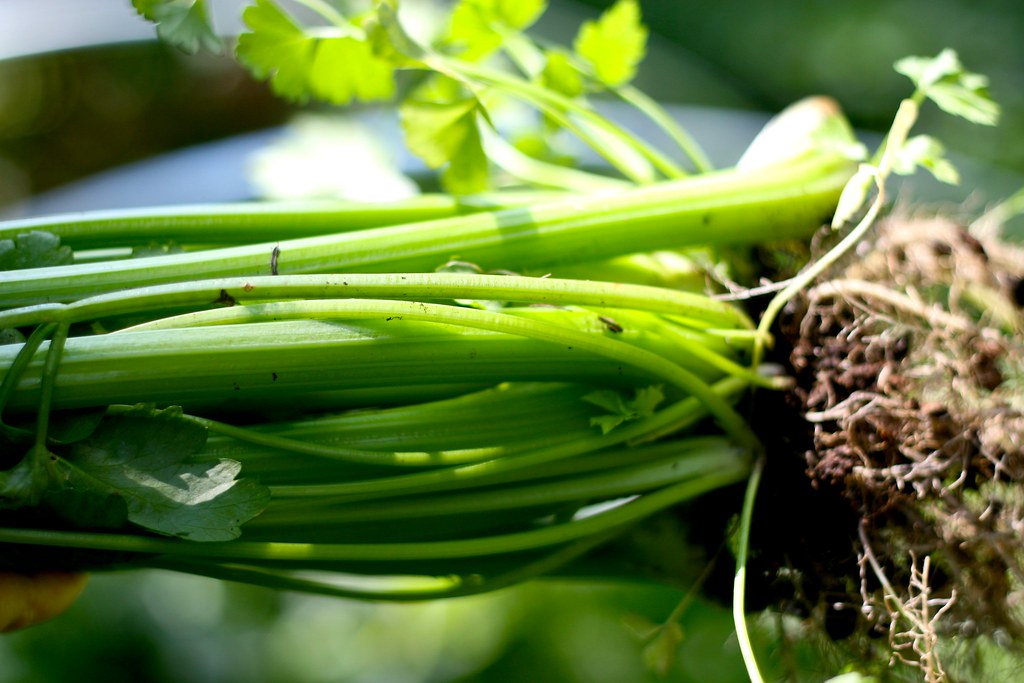Celery is a popular, versatile vegetable commonly used in salads, soups, and stir-fries. It’s low in calories and high in vitamins and minerals, making it a nutritious addition to your garden. In this guide, we’ll take you through the process of growing celery from start to finish, providing helpful tips and advice along the way.
Varieties of Celery
There are several types of celery, including Pascal, Golden Self-Blanching, and Red Stalk. Pascal is the most common variety, featuring green stalks and a mild flavor. Golden Self-Blanching is unique for its yellowish-green stalks and self-blanching characteristics. Red Stalk has a reddish hue and a slightly stronger flavor. Choose a variety based on your taste preferences and growing conditions.
Ideal Growing Conditions for Celery
Soil Requirements
Celery thrives in fertile, well-draining soil with a pH between 6.0 and 7.0. Adding compost or aged manure to the soil will improve its nutrient content and structure.
Temperature and Climate
Celery prefers a cool climate, with daytime temperatures between 60 and 70°F (15 and 21°C) and nighttime temperatures between 50 and 60°F (10 and 15°C). It can tolerate light frosts but may suffer in hot, dry conditions.
Sunlight and Watering
Celery requires full sun but can tolerate partial shade, particularly in hotter regions. Keep the soil consistently moist but not waterlogged. Watering deeply once or twice a week should suffice, depending on the weather.
Planting Celery
Starting from Seeds
Start celery seeds indoors about 10-12 weeks before the last expected frost date. Sow seeds in seed trays or small pots filled with seed-starting mix, barely covering them with soil. Keep the soil moist and maintain a temperature of around 70°F (21°C). Seeds should germinate within 2-3 weeks.
Transplanting Seedlings
Transplant seedlings outdoors when they have 3-4 leaves and nighttime temperatures consistently stay above 50°F (10°C). Space the plants 10-12 inches apart in rows 2-3 feet apart. Harden off seedlings by gradually exposing them to outdoor conditions over a week before planting.
Care and Maintenance
Fertilizing
Apply a balanced, slow-release fertilizer at the time of planting and side-dress with additional fertilizer every 4-6 weeks. Avoid high-nitrogen fertilizers, as they can encourage leafy growth at the expense of the stalks.
Pest and Disease Control
Common pests that affect celery include aphids, celery leafminers, and slugs. To control aphids, use insecticidal soap or neem oil. For leafminers, remove affected leaves and destroy them. Set slug traps or use organic slug pellets to keep slugs at bay.
Celery is susceptible to diseases like early blight, late blight, and pink rot. To prevent diseases, practice crop rotation, keep the garden clean, and avoid overhead watering.
Supporting and Blanching
To keep celery stalks upright and promote healthy growth, provide support using stakes or cages. Blanching is the process of shielding stalks from sunlight to reduce bitterness and enhance flavor. This can be achieved by wrapping the stalks with newspaper or cardboard, or by using a blanching collar.
Harvesting Celery
When to Harvest
Celery typically takes 100-120 days to mature from transplanting. Harvest when the stalks are 8-12 inches tall and have a firm, crisp texture.
How to Harvest
To harvest celery, use a sharp knife to cut the entire plant off at the soil level or remove individual stalks as needed. Be gentle to avoid damaging the plant or remaining stalks.
Conclusion
Growing celery can be a rewarding endeavor, providing you with a versatile, nutritious vegetable for your kitchen. By following this guide on ideal growing conditions, planting, care, and harvesting, you’ll be well on your way to enjoying a bountiful celery harvest.
FAQs
- Can I grow celery in containers?
Yes, celery can be grown in containers that are at least 12 inches deep and have good drainage. Use high-quality potting soil and ensure the container receives adequate sunlight.
- Do I need to prune celery?
Pruning isn’t necessary, but you can remove yellow or damaged leaves to promote healthy growth and prevent diseases.
- How do I store harvested celery?
To store celery, wrap the stalks in a damp paper towel and place them in a plastic bag or container. Store in the refrigerator for up to two weeks.
- Can I regrow celery from kitchen scraps?
Yes, you can regrow celery by placing the base of the stalk in a shallow dish of water, cut side up. Once roots form, transplant the celery base into the soil.
- Why are my celery stalks thin and spindly?
Thin, spindly stalks may be the result of insufficient sunlight, poor soil fertility, or overcrowding. Ensure your celery plants have adequate sunlight, nutrient-rich soil, and enough space to grow.
